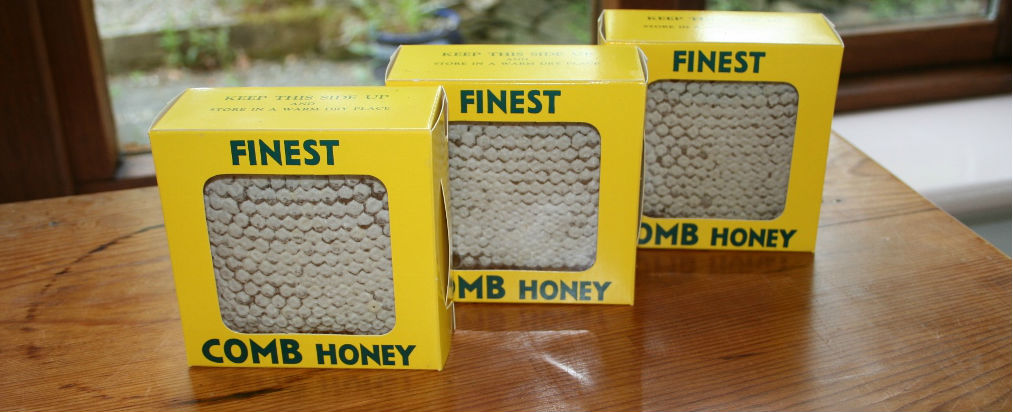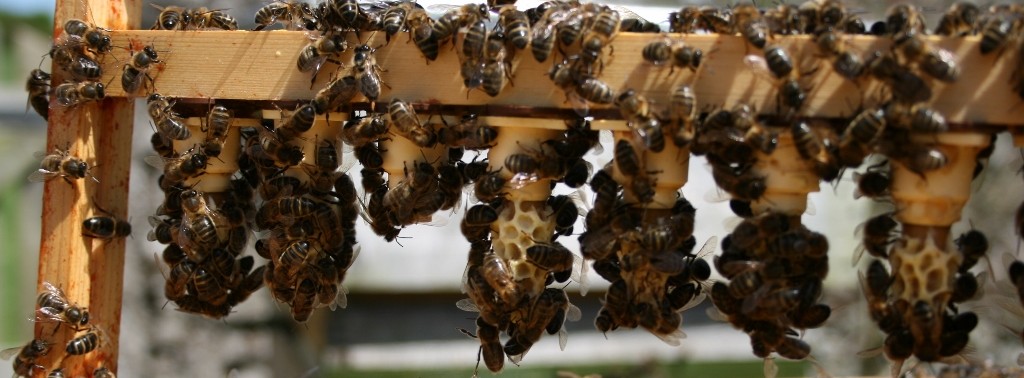The shook swarm can be used in swarm prevention and comb replacement. It can also be used in disease control. It may appear brutal but it works and once they get over the shock the bees seem to appreciate it and go like stink to get back on track. Continue reading Shook Swarm
Category Archives: Spring Management
Remote Bee Hive Monitoring
How to get Section Honey
Section honey is the creme de la creme of honeys.
Good sections command high prices and beekeepers will tell you the reason is that they are hard got. The bees hate to work all those corners and will often swarm instead. Or the weather will turn on you and you’ll be left with a lot of waste.
There is not much you can do about the weather but here are a few things you can consider to maximise your chances. Basically:
- The Hive
- The Bees
- The Forage
- Whether the Weather
Importance of Pollen
A good supply of pollen is essential to a honeybee colony because…
… bees cannot live on honey alone. While the sugars in honey supply the bees’ energy needs, in addition they require the protein, fats, minerals and the miscellaneous dietary supplements found in pollen. The protein content of the pollen of different plants is variable but generally very high, containing amounts comparable with peas and beans (Witherell), or seeds and peanuts (Dietz). Continue reading Importance of Pollen
Hooper’s Five Questions
Ted Hooper’s five questions – as described in his book ‘Guide to Bees and Honey’ were devised to walk the beekeeper through his or her weekly inspections. The first 5 columns in the Colony Assessment Sheet are there for you record the answers.
Take a look at this frame of bees above – yes there are several things there that should put you on alert!
What you do, or don’t do, in response is the essence of beekeeping. Continue reading Hooper’s Five Questions
How to improve your bees
There are all sorts of bees for sale out there – Buckfast, Carniolan, Italian, Russian, Greek – you name it but how can they possibly be better than the locals on their home turf? Think about it, think about the risks in importing diseases and god knows what-all else. Don’t import bees – improve your own.
Click here for more information on the Native Irish Bee.
Here’s how and it isn’t difficult. In fact it’s fun and very rewarding – you will see real results year on year. We used to have some really horrible bees here and only a few hives of them but each year they would chase us round the garden. Now, in the middle of summer I have around 25 hives of bees here and stings are rare.
So make a start this year. Continue reading How to improve your bees
Honey Bee Colony Assessment
Bee improvement is not difficult – anybody can do it and in fact every beekeeper should do it. The first step is to assess your colonies for a full season and record the data in a Colony Assessment Sheet. It will take a full season because the bees often do not show their true colours till they are big and strong and start to throw their weight about. Once you have the data you can compare colonies systematically and objectively then select stocks for breeding and stocks for culling.
The sheet below has been designed to record both Colony Assessment Data and routine beekeeping information from each visit. Click it for a better view. Scroll down and I’ll walk you through it…
How to Feed a Winter Apidea
If you are overwintering an Apidea you will need to keep a close eye on the stores – especially in a mild winter when the queen may start to lay early. This one in the picture above has a double brood box and was well stocked with ivy honey in autumn but it felt a bit light so I fed it today. If you are wondering why the air vent is left open – that’s because they have it completely propolised and I don’t want to leave the front door wide open.
Here’s what to do with the feed though: Continue reading How to Feed a Winter Apidea
How to unite bees – the Third Box Principle
Rationale
Once upon a time I used to keep mice. They don’t swarm but they are territorial and they do fight. If you try to introduce two mice, of any or either sex, by simply dropping one into the cage of the other they will fight. However, if you put the two of them together in a third cage they will get along like a house on fire. This is what I call ‘the third box principle’ and the same thing applies with bees.
Before we go any further I should state that the Third Box Principle is not an explanation of bee behaviour but it is a mental model which helps the beekeeper to ‘put a handle’ on what is observed. It is also a particularly helpful thing to know when you are in the thick of the latest bee conundrum and wondering what the hell to do next – it can give you extra options.
Here are some useful things to do with it:
Continue reading How to unite bees – the Third Box Principle
Swarm Prevention
Swarming is what bees do – if they are healthy they will swarm, so take that on board and you won’t be disappointed.
Swarm prevention is what you do before you find cells with larvae in them. If you find cells with larvae in them – you’re into swarm control. Continue reading Swarm Prevention







